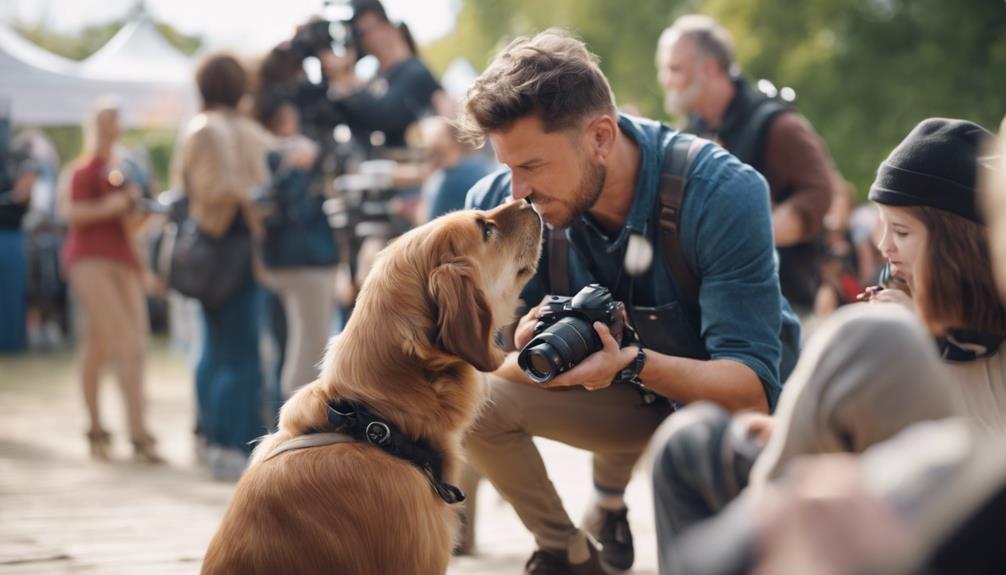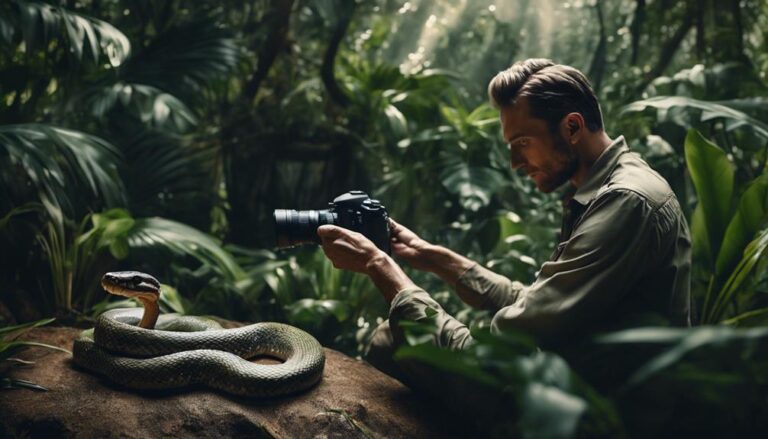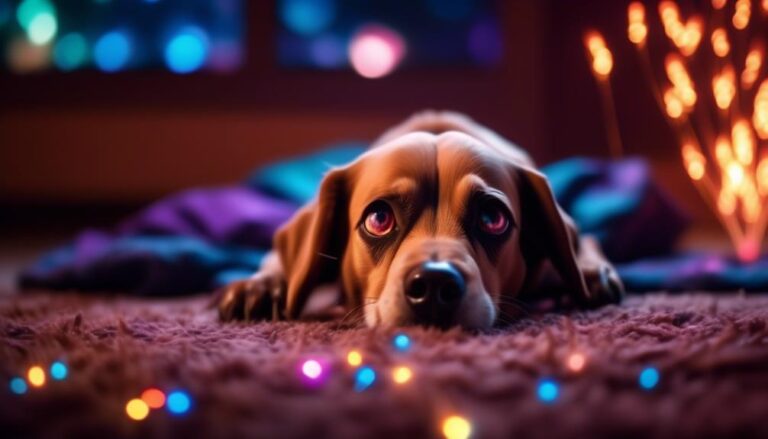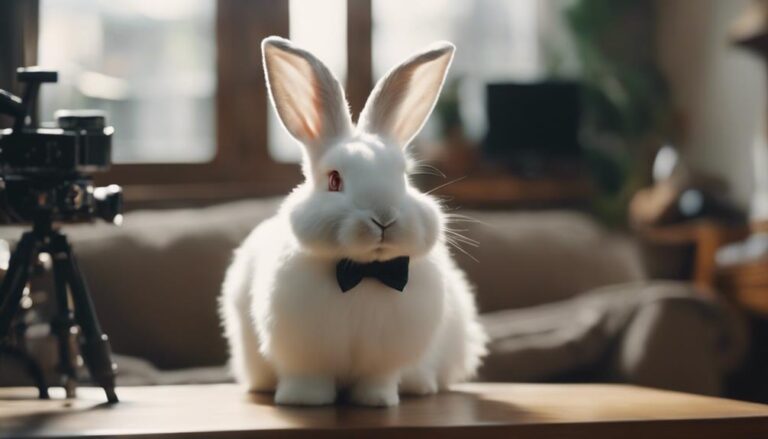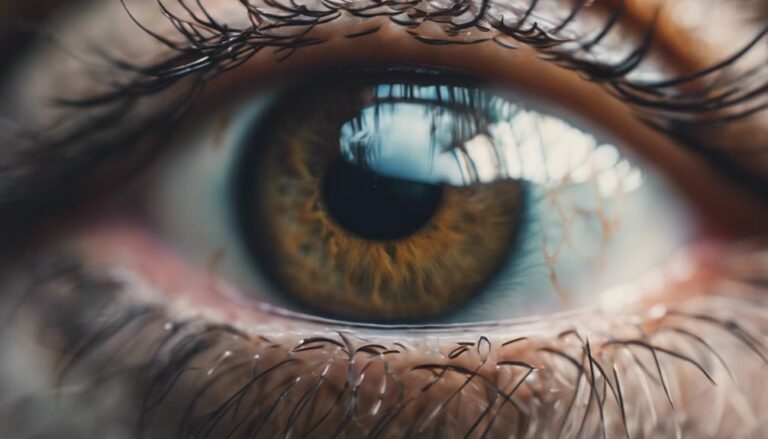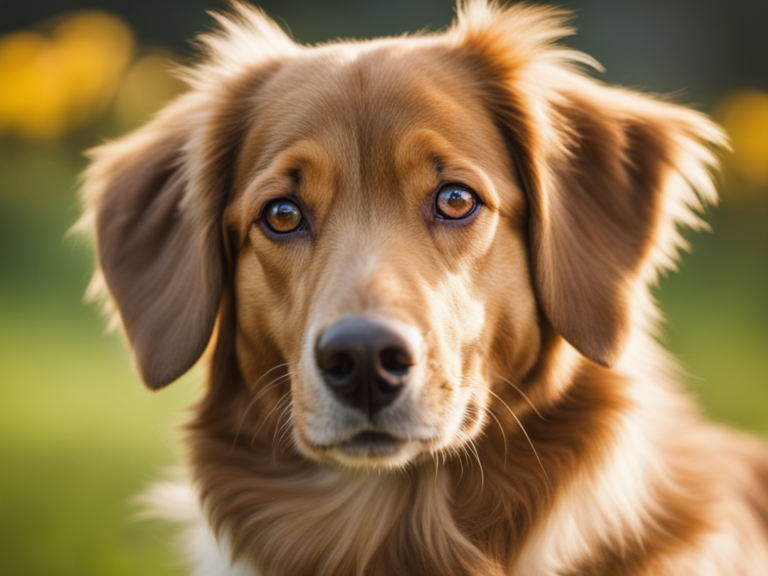Elevate your pet event photography skills by learning to capture unforgettable moments with expert guidance. Discover the importance of showcasing emotional connections between pets and owners. Equip yourself with the necessary gear, understand animal behavior, and learn tips for handling different pets. Master camera settings, lighting techniques, and composition for stunning pet portraits. Find out how to market your services and build strong client relationships. Overcome challenges during pet events and optimize your portfolio to stand out. Tap into your potential in pet event photography with specialized training tailored just for you.
Importance of Pet Event Photography
Understanding the importance of pet event photography can greatly enhance your skills and approach towards capturing memorable moments. When you focus on pet event photography, you are not only creating lasting memories for pet owners but also promoting the event itself. Your photos play an essential role in ensuring pet owner satisfaction and can be used as powerful tools for event promotion.
Through your lens, you have the ability to capture the emotional connection between pets and their owners. These moments of pure joy, love, and companionship are what make pet events so special. By showcasing these emotions in your photos, you are fundamentally telling a story. You are narrating the bond between pets and their humans, encapsulating the essence of the event in each image.
Pet owners attend these events to create memories with their furry companions, and your role as a pet event photographer is to immortalize these moments. Your photos not only serve as keepsakes for pet owners but also as a means to attract more attendees to future events. By understanding the significance of pet event photography, you can elevate your craft and deliver images that truly resonate with both pet owners and event organizers.
Equipment Needed for Pet Events
To effectively capture memorable moments at pet events, make sure you have the right equipment on hand. When it comes to pet photography, having the necessary camera accessories is important. Consider investing in extra batteries, memory cards, and a sturdy camera bag to keep your gear organized and protected during event coverage. These accessories will guarantee that you never miss a shot due to a dead battery or full memory card.
In addition to camera accessories, lighting equipment plays a significant role in capturing high-quality pet event photos. Since events can take place indoors or outdoors, having versatile lighting options is crucial. Portable LED lights or a speedlight flash can help you adjust to different lighting conditions and make sure that your subjects are well-lit, resulting in professional-looking photos.
When preparing for pet events, it's vital to pack equipment that will enable you to cover the event thoroughly. This includes a variety of lenses to capture different perspectives, a tripod for stable shots, and a camera strap for easy access while moving around. By having the right equipment on hand, you can enhance your pet event photography skills and create stunning images that truly capture the essence of the event.
Understanding Animal Behavior
Understanding animal behavior is vital for pet event photographers to anticipate and capture the best moments with precision. Animals communicate through their body language and various communication signals, which can provide valuable insights for photographers. By being observant and knowledgeable about these cues, you can enhance your ability to capture stunning and meaningful images at pet events.
Animal body language is an essential aspect to pay attention to when photographing pets. Dogs wagging their tails, cats purring, or rabbits thumping their feet are all examples of how animals express their emotions and intentions through their bodies. Understanding these cues can help you predict their next actions and adjust your photography approach accordingly.
Communication signals play a significant role in capturing authentic moments during pet events. Dogs may bark, growl, or whine to communicate, while cats may meow, hiss, or flatten their ears. Recognizing these signals can help you anticipate when a pet is about to engage in a playful activity or when they need a break, allowing you to capture candid and genuine photos.
Tips for Working With Different Pets
When working with different pets, it's essential to understand their behavior to capture the best shots. Handling shy animals requires patience and a gentle approach to help them feel comfortable in front of the camera. Utilizing posing techniques can enhance the photoshoot and bring out the unique characteristics of each pet.
Pet Behavior Understanding
Observe the body language of each pet to better anticipate their reactions and needs during a photography session. Understanding canine communication and feline behavior can greatly aid in capturing the best shots. Here are some tips for working with different pets:
- Dogs: Watch for wagging tails, which often indicate happiness. A tucked tail might signal fear or anxiety.
- Cats: Pay attention to their ears; flattened ears could mean they are agitated. Slow blinking signifies contentment.
- Rabbits: Be aware of thumping, as it can indicate stress. Gently approach them to build trust before starting the photography session.
Handling Shy Animals
To help shy animals feel more comfortable during a photography session, establish a calm and quiet environment to gradually build their trust. Building confidence is key when working with timid pets. Approach them gently, avoiding sudden movements or loud noises that could startle them. Speak softly and move slowly to help them relax. Allow the shy animal to approach you at their own pace, offering treats or toys to create a positive association. Use patience and understanding to earn their trust, respecting their boundaries throughout the session. By taking a gentle approach and giving them time to adjust, you can capture beautiful photos that showcase their unique personality.
Posing Techniques for Pets
For successful pet photography sessions, adapt your posing techniques to suit the individual characteristics of each pet. When working with different pets, consider their personalities and physical traits to capture the best pet portrait or showcase pet fashion. Here are some tips to help you work effectively with various pets:
- Dogs: Use treats or toys to grab their attention and get them to pose. Experiment with different angles to highlight their features.
- Cats: Be patient and let them move around freely. Try using props like feathers or strings to engage them in the photoshoot.
- Small Animals (Rabbits, Guinea Pigs): Create a comfortable environment with soft bedding. Use natural light and keep the session short to avoid stressing them out.
Choosing the Right Camera Settings
When capturing moments at a pet event, make sure your camera settings are optimized to freeze action and capture vibrant colors. To achieve this, pay close attention to exposure control and focus accuracy. Set your exposure settings to guarantee proper brightness and darkness levels in your photos, especially in fast-paced pet activities. Adjust your focus settings to guarantee sharp and clear images of the pets in motion.
White balance is vital for capturing accurate colors in different lighting conditions at pet events. Be mindful of the color temperature of the light around you to avoid unnatural tints in your photos. Selecting the right aperture is also key to controlling the amount of light entering your camera and determining the depth of field in your shots. A wider aperture (lower f-stop number) can create a blurred background effect, ideal for highlighting a pet's expression or action.
Lighting Techniques for Pet Photography
Guarantee your pet photography shines by mastering key lighting techniques that enhance your furry subjects' features and bring out their personalities in vibrant detail.
To capture stunning pet photos, you need to pay close attention to lighting. Here are three essential lighting techniques for pet photography:
- Natural Light in Outdoor Settings: Utilizing natural light can work wonders for your pet photos. Take advantage of early morning or late afternoon light when the sun is softer, casting a gentle glow on your furry friend. Avoid harsh midday sun, as it can create unflattering shadows. Position your pet so that the light illuminates their face, bringing out their eyes and fur texture.
- Indoor Studio with Artificial Lighting: When shooting indoors, artificial lighting can help you control the light more precisely. Invest in softboxes or diffusers to create a soft, even light that flatters your pet's features. Avoid using direct flash, as it can cause red-eye or harsh reflections. Experiment with different angles and intensities of artificial light to find the perfect balance for your pet portraits.
- Combining Natural and Artificial Light: Don't be afraid to mix natural and artificial light sources for a unique look. Use natural light as your main source and supplement it with artificial lighting to fill in shadows or add a creative touch. This combination can add depth and dimension to your pet photos, making them truly stand out.
Composition and Framing Tips
To capture compelling pet portraits, focus on mastering composition and framing techniques that highlight your furry subjects' unique characteristics and personalities. When applying the rule of thirds in pet photography, imagine breaking the image into nine equal parts using two horizontal and two vertical lines. Place your pet's eyes or key features at the intersections of these lines to create a visually appealing composition that draws the viewer's attention to the subject.
Utilizing leading lines in pet portraits can guide the viewer's gaze towards your furry friend. Whether it's a path, a fence, or a tree branch, incorporate these lines strategically in your composition to direct attention towards your pet. Experiment with different angles and perspectives to find the most effective leading lines that enhance your pet's presence in the photo.
Remember to contemplate your pet's personality and characteristics when framing the shot. Whether they are playful, curious, or shy, try to capture these traits in your composition. Pay attention to details like fur patterns, facial expressions, and body language to convey your pet's individuality effectively.
Capturing Action Shots at Events
For dynamic pet event photography, capturing action shots adds excitement and energy to your portfolio. To master the art of action shot photography at pet events, consider the following tips:
- Action shot techniques: To capture pets in action, use a fast shutter speed to guarantee their movements. This technique assures sharp and clear images even when the subject is moving swiftly. Additionally, try panning with the pet's movement to create a sense of speed and blur the background, emphasizing the action.
- Timing and movement capturing: Anticipate the pet's movements to click the perfect action shot. Keep your camera ready and focus on the pet's eyes to convey emotion and intensity in the image. Burst mode can be handy in capturing a series of shots in quick succession, increasing the chances of getting that perfect action moment.
- Experiment with angles and perspectives: Change your shooting position to add variety to your action shots. Get down to the pet's level for a more engaging and immersive photograph. Try shooting from different angles, such as from above or below, to create unique and visually appealing images.
Editing and Enhancing Pet Event Photos
Enhance your pet event photos by utilizing editing techniques to bring out the best in your captured moments. Editing techniques play an important role in perfecting your pet event photos. One of the key editing techniques is adjusting the brightness and contrast to make sure your photos are well-lit and vibrant. This simple adjustment can make a significant difference in the overall look of your images. Additionally, you can use color correction to enhance the colors of your pet event photos, making them more visually appealing.
Creative enhancements can take your pet event photos to the next level. Experiment with different filters and effects to add a unique touch to your images. Whether it's a vintage filter for a nostalgic feel or a black and white effect for a classic look, creative enhancements can help you create stunning pet event photos that stand out.
Don't be afraid to crop your photos to improve composition or remove distractions. Cropping can help emphasize the main subject of your photo, making it more impactful. Moreover, consider adding text or graphics to personalize your pet event photos and make them more engaging.
Marketing Your Pet Event Photography Services
When marketing your pet event photography services, it's crucial to showcase your unique style and expertise to attract potential clients. Here are some effective strategies to help you promote your services:
- Utilize Social Media: Leverage platforms like Instagram, Facebook, and Twitter to share your stunning pet event photography work. Create engaging posts, share behind-the-scenes glimpses, and interact with pet owners online to increase your visibility and attract new clients.
- Attend Networking Events: Make connections in the pet industry by attending pet expos, adoption events, or pet-related workshops. Bring along a portfolio of your work and business cards to showcase your talent and exchange contacts with potential clients or collaborators.
- Offer Special Promotions: To entice pet owners to book your services, consider running special promotions or discounts for pet events such as dog shows, pet birthdays, or charity fundraisers. Promote these offers on your social media channels and through word-of-mouth to attract new clients and generate interest in your pet event photography services.
Building Relationships With Clients
You can enhance client trust by delivering high-quality photography and maintaining clear communication throughout the process. Understanding your client's needs and expectations is essential for providing a personalized and satisfactory service. By prioritizing these aspects, you can build strong and lasting relationships with your clients in the pet event photography industry.
Client Trust Building
Building trust with your clients is essential for successful pet event photography business relationships. To establish strong client trust, focus on the following key strategies:
- Building Rapport: Take the time to get to know your clients on a personal level. Show genuine interest in their pets and the event you are capturing.
- Trust Building: Be transparent and reliable in all your interactions. Fulfill on your promises and make sure that clients feel confident in your abilities.
- Consistent Communication: Keep your clients informed about the progress of their pet event photos. Promptly respond to any inquiries or concerns they may have.
Communication Strategies
To foster strong relationships with your clients in pet event photography, prioritize clear and consistent communication. Effective communication is key to building rapport with your clients. Make sure to actively listen to their needs and preferences, and respond promptly to any inquiries or concerns they may have. Keep them informed about the photography process, such as scheduling, pricing, and delivery timelines. Utilize various communication channels such as email, phone calls, or in-person meetings to stay connected with your clients. By maintaining open and transparent communication, you can establish trust and credibility, leading to long-lasting relationships with pet owners who value your services. Remember, communication is the foundation of successful client relationships in the pet event photography industry.
Client Needs Understanding
Understanding your clients' needs is crucial for establishing strong relationships in pet event photography. To guarantee client satisfaction and effective communication, consider the following:
- Communication Skills: Hone your ability to listen actively to your clients. Understanding their preferences, concerns, and vision for the event will help you customize your services to meet their expectations effectively.
- Client Expectations: Establish clear expectations from the outset to avoid misunderstandings. Discuss details such as the event schedule, desired shots, and delivery timelines to align your services with what the client anticipates.
- Relationship Building: Dedicate time to building a rapport with your clients. Establishing trust and demonstrating reliability can lead to repeat business and positive referrals in the future.
Handling Challenges During Pet Events
Handling unexpected obstacles with poise is vital to effectively capturing memorable moments during pet events. In pet event photography, problem-solving skills are essential when faced with difficult situations. Being prepared for challenges can help you navigate through potential issues smoothly. One common difficulty photographers encounter during pet events is dealing with uncooperative pets. To tackle this, try using treats or toys to grab their attention and keep them engaged. Additionally, remain patient and calm to create a relaxed environment for the animals.
Another challenge you may face is poor lighting conditions. To overcome this, consider investing in external lighting equipment or adjusting your camera settings to compensate for low light. Additionally, being adaptable and quick on your feet is key when unexpected changes occur during the event. Stay flexible and ready to adjust your plans as needed to make sure you capture the best moments.
Moreover, managing time efficiently is crucial in handling multiple aspects of a pet event simultaneously. Prioritize tasks, such as scheduling photo sessions and interacting with pet owners, to make the most of your time. By staying organized and focused, you can navigate through challenging situations with confidence and professionalism, ultimately delivering high-quality pet event photographs.
Showcasing Your Pet Event Photography Portfolio
When presenting your pet event photography portfolio, focus on showcasing a diverse range of enthralling moments captured at various events. This will not only highlight your skills but also demonstrate your versatility in capturing different aspects of pet events. To make your portfolio stand out, consider the following tips:
- Diversify Your Pet Event Photography Styles: Include a variety of photography styles in your portfolio to showcase your adaptability and creativity. Whether it's candid shots capturing pets in action or posed portraits showcasing their unique personalities, displaying a mix of styles will appeal to a broader audience.
- Utilize Creative Photo Editing Techniques: Enhance your photos with creative editing techniques to make them visually compelling. Experiment with color correction, lighting adjustments, and filters to give your images a professional and polished look. Creative editing can help bring out the best in your pet event photos and make them more engaging for viewers.
- Tell a Story Through Your Portfolio: Arrange your pet event photos in a way that tells a cohesive story. Organize them chronologically or thematically to create a narrative that draws viewers in and provides context to the captured moments. By structuring your portfolio effectively, you can create a more impactful presentation of your work.
Frequently Asked Questions
How Do You Handle Difficult or Aggressive Animals During a Pet Event Photography Session?
When handling difficult or aggressive animals during a pet event photography session, it's essential to prioritize your safety and the animal's well-being. Utilize training techniques to manage their behavior and always have safety precautions in place.
Can You Provide Tips for Capturing Candid Moments With Pets at Events?
When capturing candid moments with pets at events, focus on using lighting techniques to enhance pet expressions. Be ready to snap action poses swiftly. By blending these elements, you'll create authentic and lively shots that truly capture the essence of the moment.
What Are Some Creative Ideas for Incorporating Props Into Pet Event Photography?
To enhance your pet event photos, try prop styling for a touch of creativity. Plan themes that resonate with viewers and weave pet interactions into visual storytelling. Props can add depth and playfulness to your shots.
How Do You Ensure the Safety and Well-Being of the Animals During a Photo Shoot?
To guarantee the safety and well-being of the animals during a photo shoot, keep in mind their comfort and needs. Use positive reinforcement, comprehend animal behavior, and practice gentle handling techniques. Prioritize their welfare throughout the session.
Are There Any Legal Considerations or Permissions Needed When Photographing Pets at Events?
When photographing pets at events, make sure you respect privacy concerns by obtaining necessary permissions. Be mindful of licensing requirements and adhere to them. Understanding legal considerations is crucial to protect both the animals and your work.
Conclusion
Congratulations on completing your pet event photography training! Remember to always be patient and understanding when working with animals, as their behavior can be unpredictable. Don't forget to showcase your portfolio to attract new clients and always endeavor to build strong relationships with them. With the right equipment, camera settings, and marketing strategies, you'll be well on your way to becoming a successful pet event photographer. Good luck!

